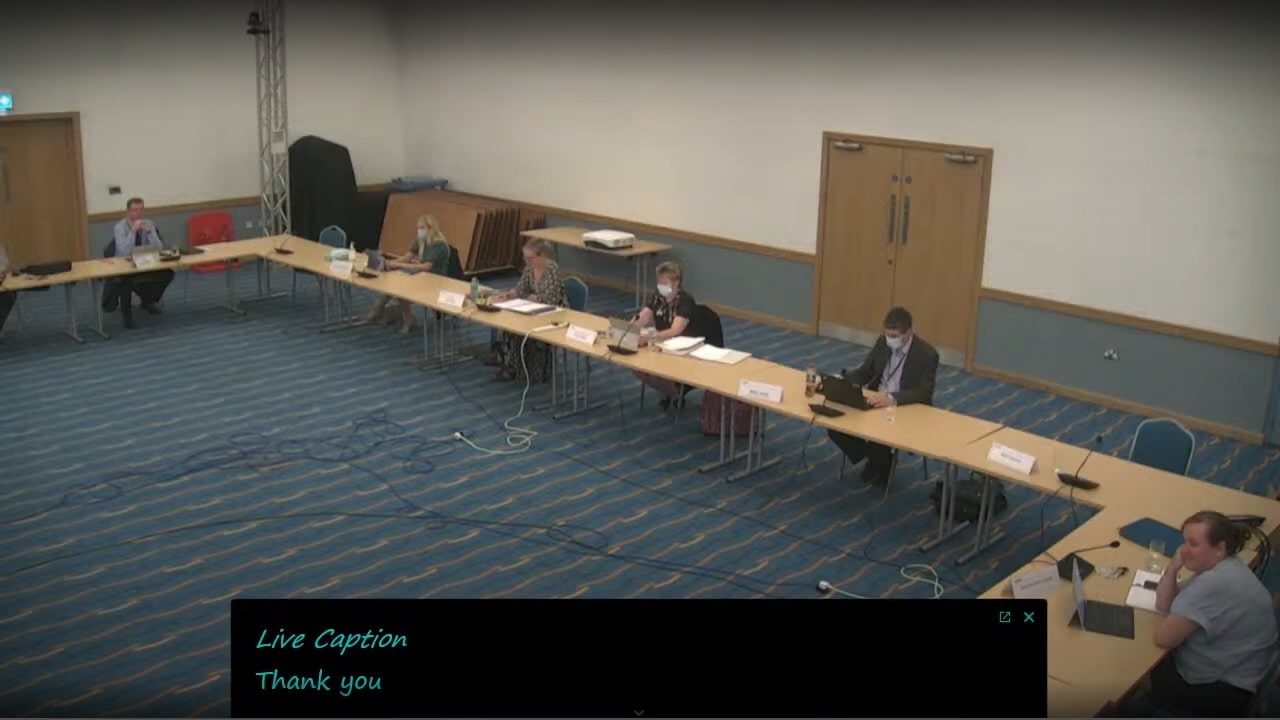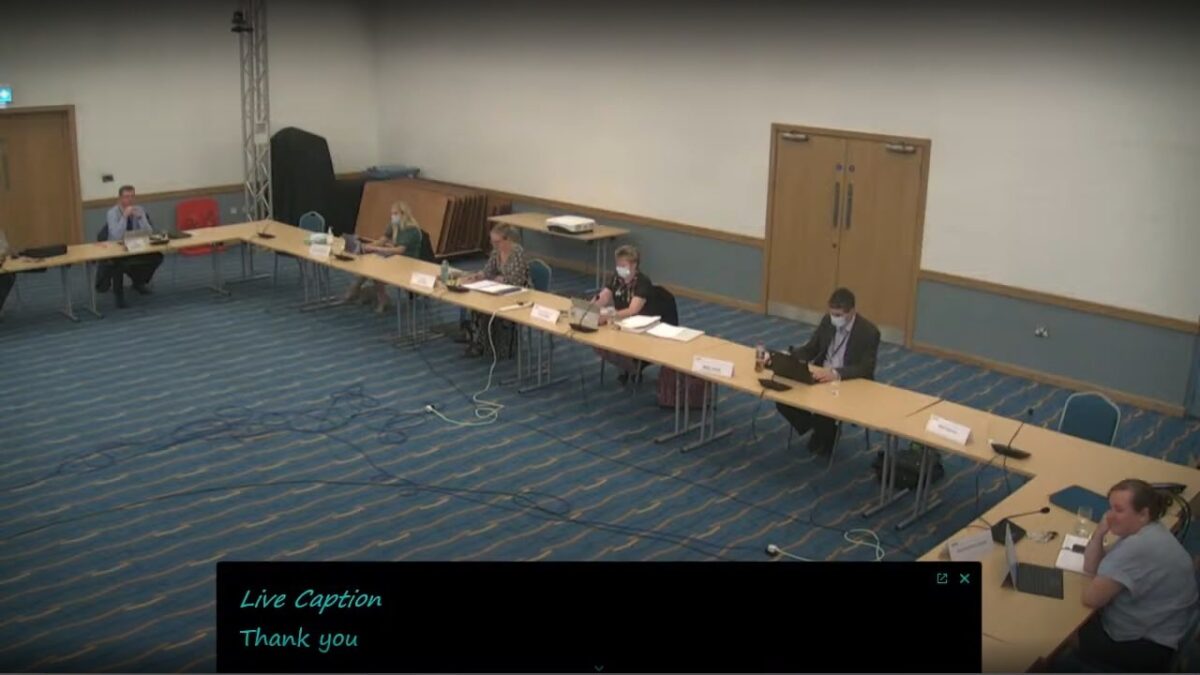What happened at a public meeting of Wirral Council’s Environment, Climate Emergency and Transport Committee (Wirral Council) 7th September 2021?
By John Brace (Editor)
and
Leonora Brace (Co-Editor)
First publication date: Wednesday 8th September 2021, 11:25 AM (BST).

Please accept YouTube cookies to play this video. By accepting you will be accessing content from YouTube, a service provided by an external third party.
If you accept this notice, your choice will be saved and the page will refresh.
Environment, Climate Emergency and Transport Committee (Wirral Council) 7th September 2021
Yesterday’s public meeting of Wirral Council’s Environment, Climate Emergency and Transport Committee, held now in person at the Floral Pavilion in New Brighton saw plenty of engagement during the meeting at question time with local residents, many of whom had concerns about Hoylake Beach.
Environmental issues can be very contentious, with passionately held views.
In a nutshell, the situation and brief history regarding Hoylake Beach as far as I understand it can be summarised like this. In 2019 there was a lot of media coverage and a backlash against the use of a herbicide (a chemical that kills weeds) by Wirral Council on Hoylake Beach. The way it had been used, the closure of the beach and the visual impact as well as the impact on flora and fauna was quite understandably a topic of both public and political debate and concern.
Beyond Hoylake, Wirral has around 25 miles of coastline and during the pandemic, people have valued quiet open spaces for exercise. For those of us born on the Wirral, grown up here or have lived here some time, the vast and beautiful coastline is one unique feature of Wirral that give us a sense of place ranging from the nature reserve of Hilbre Island (discussed later in the same meeting), which is just a bit further down from Hoylake to the popularity of West Kirby and New Brighton with tourists and the many other places I haven’t mentioned.
There are many reasons why those who live on the Wirral want these places generally kept in a natural state but also managed appropriately so that they can be enjoyed and appreciated by local residents and visitors.
Wirral Council is however developing a new beach management plan for Hoylake and its Have Your Say website was mentioned at the meeting. Hoylake Beach is a Site of Special Scientific Interest and as detailed above two years ago Wirral Council have stopped raking the beach and stopped using glyphosate on it.
The way that approach has become a contentious political issue is that a number of residents of Hoylake disagree with how Wirral Council is managing the beach since 2019 and want the amenity sandy beach restored.
Wirral Council and of course councillors are normally there to reflect residents’ wishes, but the position of Wirral Council is that it would be wrong (for a number of reasons) to change the current approach to managing the beach, but that a beach management plan will be consulted on.
A number of years ago (2016) I realised the tendency on environmental issues, even when a compromise is agreed for people to play the man and not the ball and for years of rancour to carry on until matters are resolved with some finality if a decision is perceived to be unfair or unjust. Our official policy is therefore one of non-interference, but I will finish with this somewhat (for me) emotively written warning.
Humanity is doomed to extinction (or if not extinction a large change in global population accompanied by the unrest this will cause) unless changes are made. This society values and prizes individualism. Although how individuals live their lives does have a wider impact on everybody collectively, the thinking, mindset and quality of political debate has got to really change gear if we collectively as a species are to get through what is going to be a very difficult period to come.
You can watch (nearly the whole meeting) on my video of it at the start of this piece.
If you click on any of the buttons below, you’ll be doing me a favour by sharing this article with other people.

Nothing will change. Greed is council’s and governments only concern.
I lived in Hoylake from 1968-91 and can remember the golden sands and the baths. They were the halcyon days of my childhood until I left home and I guess I witnessed the ‘swan song’ of Hoylake in its guise as a fading Victorian seaside town. Although I haven’t lived there for 3 decades, it still retains a large piece of my heart within my own personal time-capsule of memories. I guess the traditional beach-view is the last link with what gave the town its prominence from the late 19th century onwards. This is now under threat from nature and looks likely to divide opinion within the town, maybe as bitterly as the toxic Brexit debate.
For once, I actually think WBC are doing the right thing consulting with environmental science before making any decisions. My gut feeling on the issue is, we will probably be fighting a battle we can’t win by trying to prevent the beach turning into dunes similar to Formby further up the coast. As an island, every time the tide comes in and out, it affects the UK’s coastline and changes it. Although the changes are tiny, they will go towards shaping the future outline of the island when seen from space.
A fundamental problem we have as humans is, we are only able to visualise our environment from the point of view of our own minuscule life-spans. In terms of environmental change, our lifetimes are too short to comprehend a future we will never see. Did the Romans at Deva envisage that one day the bustling port on the edge of their town would become the land which the Roodee race course now occupies? I think not.
Holding on to that thought, what we see at Hoylake today is essentially, a human construct installed during a very short period in our recent history. Before any sea walls and promenades, the West Wirral coastline was open to whatever the tides would throw at it. Hoylake was a low-population fishing village named Hoose with a border of sand dunes offering the only protection from the sea. Following the success of the port of Liverpool, Wirral’s population increased dramatically and Hoose transformed from an unimportant fishing village to a popular Victorian seaside holiday town. As was the fashion back then, seaside resorts were developed all over the country, primarily for the pleasure of ordinary working people from industrial cities to ‘take the sea air’.
The British seaside holiday was popular until foreign travel became accessible in the early 1960s and from memory, Hoylake still managed to attract day-trip visitors into the mid 1970s. By then, the old B&B boarding houses which boarded the more affluent Victorian and Edwardian families who could afford to holiday for more than one day, had long gone. By the 1980s the town had lost its swimming baths and its heyday was stored in the memories of those still alive to remember and within a few preserved 19th century photographs.
The harsh reality is, those days of Hoylake promenade packed with Victorians seeking the health benefits of the fresh sea air are long gone; and they’re not coming back. Hoylake’s coastline was sand dunes 300 years ago and was likely in that natural state from the early Neolithic period when what we recognise today as the shape of The Wirral peninsula was formed. The uniformed promenade structures installed by the Victorians are neonatal by comparison. They form a semi-permanent barrier between modern man and the infinitely changing coastal landscape. If humans are resistant to change, then they are taking on a formidable opponent in Mother Nature. She runs on her own terms and can impose her will over the lifetimes of many generations. We are obsessed with removing green shoots pushing through concrete yet when we do, it is merely cosmetic and temporary. Nature always finds a way back, in spite of our meddling.
Our arrogance driven by the success of our species makes us challenge what we think we can control. If we can’t control it, we usually end up trying to destroy it over the duration of our limited lifetimes. In the case of grasses returning to the beach at Hoylake, my personal view is, the Victorians borrowed the landscape for what was only ever going to be a finite remodelling project. It served a purpose for the lifetimes of the people who built it and one or two generations after. Natural forces beyond our control are once again, dictating the next incarnation of its place in the landscape.
*envisaged*
*resistant*
*envisaged*
*resistant*
I can’t edit my previous comment!
JB (Editor) 2.10.2021 I’ve corrected the spelling in the earlier comment as per this comment. Sorry but published comments can’t be edited by those other than the Editor or Co-Editor at present.
You make good point John in relation the the standard of the politics/political debate around this.
The council can’t do anything without permission from Natural England and NE have said they won’t give permission until studies have been done.
Further to thedrumdoctors comments, my view is that the filling in of the old Hoyle lake is crucial.
In 1800 it swept in round Hilbre and redrocks in to the old lifeboat station and then back out at Dovepoint. Even at low tide, the water was within a few hundred metres of the old lifeboat station and the channel that was hoyle lake always had water. By 1900 at low tide the water didn’t form a complete channel, it came in from Dovepoint to the old life boat station but beyond that to red rocks was dry (well muddy and silty). The channel continued to fill in and now it’s gone from Hoylake even at normal high tides it doesn’t come in as far. The boats that used to be moored at Hoylake have gone/moved down to Dovepoint. The beach used to slope in the first few hundred metres into the channel, now it drops about 2 metres over 800 metres. The sand continues to rise (not so much at the prom wall but across the beach out to the 7m tide which is way out. that creates the conditions for grasses to grow.
Unless you can stop the sand arriving onto the beach you won’t get the beach back that existed in the ‘good old days’. Even then you’d need to stop the road drains emptying onto the beach or excavate the old hoyle lake to get a slope back allowing the drain water to wash away.
We’ve always done it often isn’t a good answer to a question.